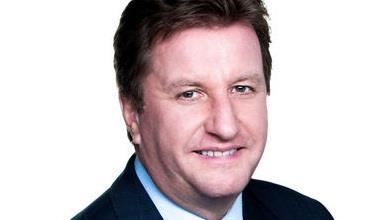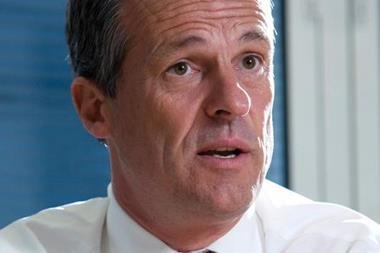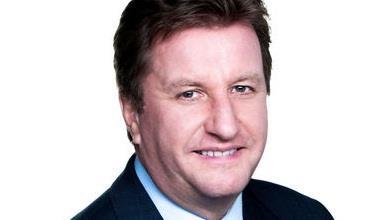Analysts give a mixed reaction to Aviva and RSA’s third-quarter 2011 results

Three different analysts have run the rule over Aviva and RSA’s financial results, and have come back with three very different conclusions.
Eamonn Flanagan, Shorecap:
Aviva:
A better-than-expected new business result from Aviva for 9M 2011, together with an IFRS NAV better than we had forecast, plus an embedded value broadly where we had anticipated but a slightly concerning drop in the IGD (Insurance Group Directive) solvency surplus figure. Worldwide new business was down 9% in 9M 2011 for Aviva (SCS forecast: -12%) reflecting growth of 6% in the UK (SCS: 3%) and 16% from Asia Pacific which offset the reductions of 18% in Europe (SCS: -20%) and 24% in the US (as expected).
In the UK there were good performances in pensions (+32%) and annuities (+6%) which offset reductions of 50% in bonds and 21% in equity release. The positive in Europe included Ireland (+11%) and France (down just 17%). Aviva’s move towards capital-lite products was evident in the drop in new business margin to 2.3% (9M 2010: 2.7%) yet the internal rate of return improved to 13.8% (9M 2010: 13.1%).
The combined ratio in the non-life division improved to 96% (9M 2010: 97%) although we had expected a further improvement from the 96% reported in H1 2011. The IFRS NAV increased by 5% in Q3 2011 to 448p, whilst the embedded value dropped by 14% to 479p (as expected). The IGD surplus reduced to £2.7bn from £4.0bn at the end of June 2011, with the size of this drop surprising us - £0.2bn was due to the dividend with £0.7bn from market moves. Aviva has expanded its hedging programme in Q4 2011 and also expects a gain of £0.2bn from restructuring the non-life business. However, we expect these figures to come under scrutiny.
RSA:
RSA reported strong growth in premiums, up 11% (better than we had expected) together with a reduced NAV of 101p (down from 106p at the end of June 2011) as expected - although the current NAV has rebounded to 106p - and an IGD surplus of £1.3bn (down from £1.4bn at the end of June 2011). The premium growth reflected increases of 13% in international (Canada +20%, Scandinavia +7% and other Europe +16%), 7% in the UK (driven by personal lines such as Tesco Pet) and 17% from emerging markets. The group reiterated its expectation of a better than 95% combined ratio for the full year, which we believe should be taken positively, despite around £60m of cat losses in the quarter from Denmark, Thailand and Ireland.
These figures should demonstrate RSA’s ability to drive top-line growth at good underwriting margins”
These figures should demonstrate RSA’s ability to drive top-line growth at good underwriting margins thus delivering good dividend flow. The drop in the NAV in Q3 2011 reflected an increase in the pension scheme deficit, forex and interim dividend, with many of these reversed in Q4 2011 to date, bringing the NAV back to 106p - we believe this figure should provide plenty of support for the share price.
Overall, a good IMS from RSA. We believe the shares offer considerable upside potential, especially as the market gets comfortable with the new chief executive, Simon Lee, whom we regard highly.”
James Shuck, Jefferies:
Aviva:
Total long-term savings PVNBP sales down -10% 3Q11 on 3Q10 compared with -15% at 1H 11 on 1H 10. Geographically sales were down in France (-15.6% 3Q11 on 3Q10) and Poland (-34.6% 3Q11 on 3Q10) as management focus on less capital intensive products. Sales grew in the UK (6.4% 3Q11 on 3Q10) driven by strong pension and annuity sales, and Spain also experienced growth (+5.9%% 3Q11 on 3Q10). The general insurance business had a COR of 96% compared to 97% at 9 months 2010 and 97.3% at H1 11. UK GI sales were up +11.6% at Q3 compared with +14% at H1 11, as the business grows prudently into a hardening market.
Aviva has not disclosed an updated economic capital position (170% at H1 11), however we note that the MCEV NAV has fallen by -13% 9M to H1 reflecting weaker markets in Q3. This is a bit weaker than we were looking for but not significantly so and we believe that the economic capital position remains robust. Overall these numbers look fine.
RSA:
Q3 IMS pretty uneventful, with no profit numbers and a continuation of (encouraging) premium growth around 9%. Management has indicated £60m of H2 losses from Nat Cat events but continue to guide to a combined ratio of better than 95% (JEF estimate 94%). Somewhat encouragingly, there was also confirmation of recent guidance for investment income for the year. Economic capital surplus declined from £1.0bn at H1 to £0.7bn at 9M driven by lower risk free rates and the payment of the interim dividend. Overall, these look OK, but nothing more.
Barrie Corns, Panmure:
Aviva:
On general insurance the COR was 96% and had been achieved at the 9M stage (H1 2011:96.3%). The group remains on target to achieve 97% or better for 2011. GI and health NWP is up 9% at £7.0bn. For IGD solvency surplus the IGD surplus was quite a bit lower than anticipated at £2.7bn (Q1 2011: £3.3bn, H1 2011: £4.0bn) which represents a coverage ratio of 142%.
The share price remains highly volatile, reflecting the high level of uncertainty created by the euro crisis”
The reduction reflects market movements and in particular interest rates, credit spread widening in the annuity book (c£700m impact) and equity movement (a 20% fall in equities lowers the IGD surplus by £400m). While the reduction is greater than the market is anticipating it’s worth highlighting that the IGD surplus does not include net unrealised gains of £1.6bn arising particularly in the US. In Q4 (14 November) £700m of hybrid debt will be repaid thus lowering the IDG even further. However, we understand than management actions being taken in Q4 will completely offset the reduction. These actions include a UK general insurance restructuring and the delivery of capital transactions (including a release of capital from the US back book. We thus feel relatively relaxed concerning the movement in IGD surplus.
Investment view: The share price remains highly volatile, reflecting the high level of uncertainty created by the euro crisis. Aviva is the most exposed to Europe of all the large UK quoted life insurers and so we view the current share price movements as largely inevitable. That said, we believe that Aviva’s exposure is manageable in all but the darkest of scenarios and as and when there is a resolution to the European crisis we believe that the shares will fly.
RSA:
RSA’s Q3 IMS shows net written premium at 30 September at £6.1bn (+11%), a solid IGD surplus of £1.3bn representing 2x coverage and maintained 2011 combined operating ratio guidance of at least 95% despite £60m of exceptional weather. The NTAV at 30 September, including the pension fund deficit, was 62p/share but this has subsequently increased to 68p/share currently. Guidance for 2011 investment income and total gains remains unchanged which is positive. The non-life rating environment remains challenging but RSA continues to drive rate increases through its operations.
Performance: RSA has reiterated its guidance for 2011 year end combined operating ratio (COR) “of at least 95% for 2011” which is positive given the £60m anticipated for exceptional flood claims in Thailand, Dublin and Copenhagen (£20m each). We are forecasting a 2011 COR at 94.9% but Q4 can be a tricky weather quarter albeit that Q4 seems to have started benignly.
Rating environment: The rating environment remains challenging but RSA is driving through rate increases where it is able. In the UK personal motor rates are +19%, household +6% and in commercial, motor +14%, liability +2% and property +5%. Elsewhere rates are moving forward but the cycle is still soft.
Hosted by comedian and actor Tom Allen, 34 Gold, 23 Silver and 22 Bronze awards were handed out across an amazing 34 categories recognising brilliance and innovation right across the breadth of UK general insurance.












































No comments yet